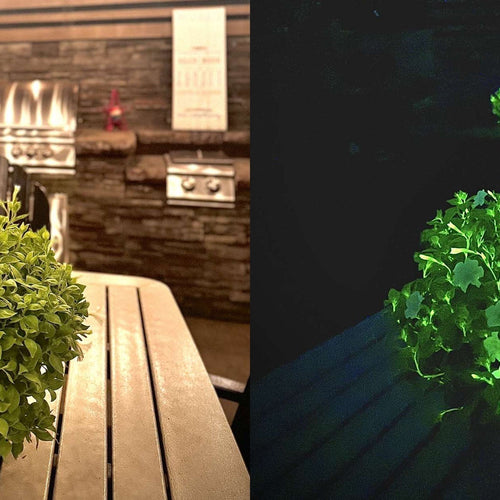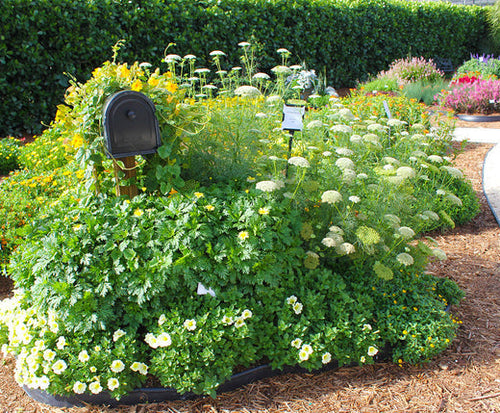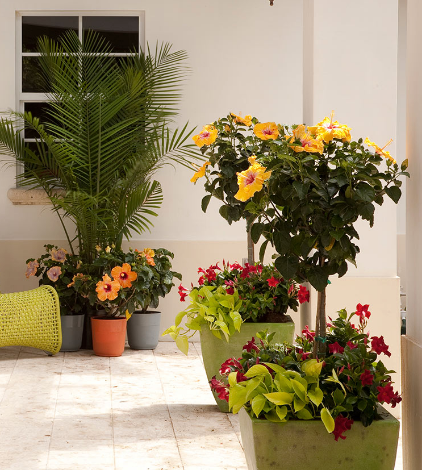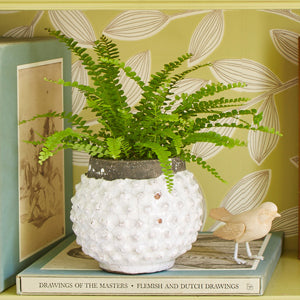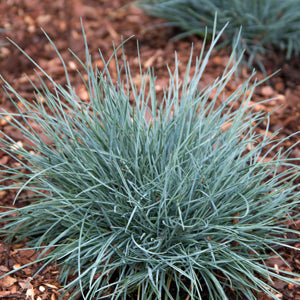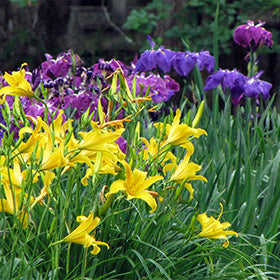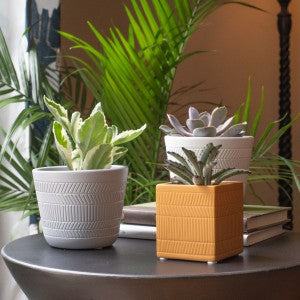Garden design and interiorscaping: It’s as easy as 1-2-3. The Rule of Three is a design concept that’s so easy to use you almost can’t go wrong! Simply line up three of the same plants, in the same pot, to create a visually pleasing series.

For example, a series of identical pots lined up on a stone wall
creates a simple (yet satisfying!) repetition. Let’s break down what’s going on the photo: A neutral-color, taupe
terra-cotta container is planted with a variegated New Zealand flax; one is pretty, but unremarkable. Add two more of
the same combination and the grouping becomes dramatic, artistic, continuous, soothing. It’s the “sum is greater than
its parts” theory in action.
One is pretty.
Two is a pair.
Three is a collection. A statement. A validation.

In garden design, using groups of odd-numbered plantings creates harmony and
continuity. That’s why the “rule of three” could also be the “rule of five” or the “rule of seven” in a large garden
bed. In smaller spaces—such as on a fireplace mantle, dining room table, patio wall, or bookshelf—a series of more than
three is visually complicated.
Three is the right number. The rule of three, or thirds, isn’t new. It first
entered the vernacular in 1797 by John Thomas Smith in a book about the balance of light and dark in painting.
And in garden design and indoor décor, the rule of three can be a quick solution to plant placement. Try this:

Succulent sensation:
The symmetrical shape of succulents offer lots of opportunities for the rule of three: Three echeveria, three agave, or three aloe make a terrific textural
trio.
Elegant threesome:
Three sanseverias make an easy entryway arrangement. Line them up or group them together in a corner.Adorable gang:
Choose a group of three small cactus, such as barrel or teddy bear cactus, and set them in a queue on a table or bookshelf.So if you think one is the loneliest number and two is simply too symmetrical, try three. Because three is the perfect group.
And while the rule of three won’t solve all your problems, it offers you an easy, balanced, stylish little tweak that your indoor and outdoor spaces just may need.





